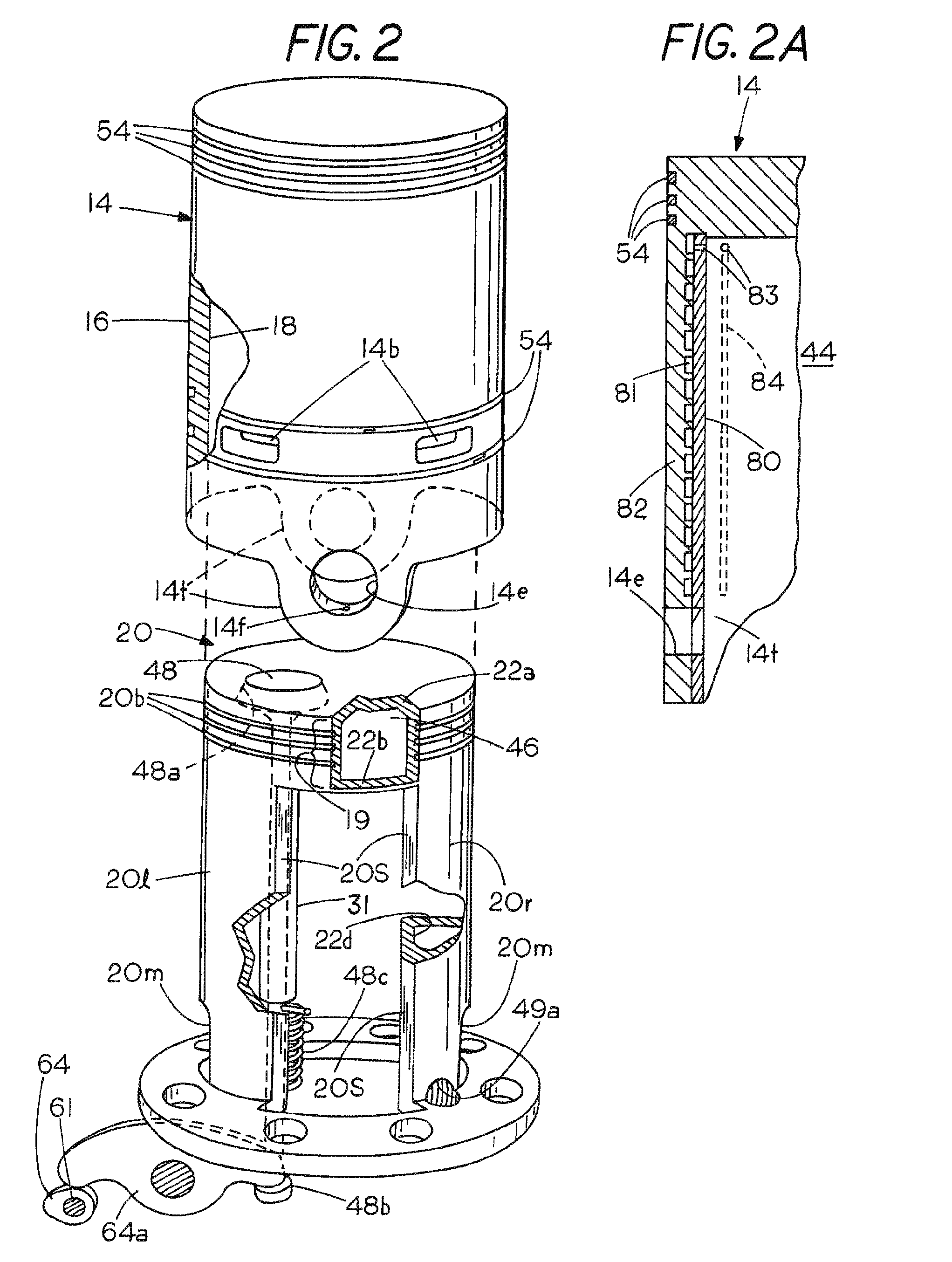High efficiency multicycle internal combustion engine with waste heat recovery
a multi-cycle, internal combustion engine technology, applied in the direction of machines/engines, combination engines, combination engines, etc., can solve the problems of inefficiency of the system for recovering waste exhaust heat and waste heat from the combustion chamber coolant in a dual-cycle engine, and achieve the effects of improving operating efficiency, reducing specific fuel consumption, and high efficiency
- Summary
- Abstract
- Description
- Claims
- Application Information
AI Technical Summary
Benefits of technology
Problems solved by technology
Method used
Image
Examples
Embodiment Construction
[0019]Refer now to the drawings in which the same numbers refer to corresponding parts in several views. Shown diagrammatically in FIGS. 1-7 is a combination internal combustion engine and steam engine 10 that has a cylinder 12 containing a cup shaped trunk style piston 14 which, unlike ordinary pistons, is machined and ground to precise tolerances both outside at 16 as well as in the inside at 18 and is positioned to reciprocate within an annular space 11 between the inside wall 12a of the cylinder 12 and a stationary steam cylinder head. The piston 14 is provided with two compression rings and at the bottom an oil ring all marked 54. Near the lower end of the piston are circumferentially arranged exhaust openings 14b in the piston skirt. Positioned above and below the exhaust openings 14b are additional compression rings 54 (FIGS. 1 and 2). While a single cylinder and piston is shown for convenience in some views, the invention is of course applicable to multi-cylinder engines as ...
PUM
 Login to View More
Login to View More Abstract
Description
Claims
Application Information
 Login to View More
Login to View More - R&D
- Intellectual Property
- Life Sciences
- Materials
- Tech Scout
- Unparalleled Data Quality
- Higher Quality Content
- 60% Fewer Hallucinations
Browse by: Latest US Patents, China's latest patents, Technical Efficacy Thesaurus, Application Domain, Technology Topic, Popular Technical Reports.
© 2025 PatSnap. All rights reserved.Legal|Privacy policy|Modern Slavery Act Transparency Statement|Sitemap|About US| Contact US: help@patsnap.com



